One of the most admired decorative materials in the world is nacre, more commonly known as mother of pearl. This shining, rainbow-toned surface can be found in furniture, jewellery and mixed media artworks as far back as ancient Egypt, later flourishing as a commercial artisanal product in India. You will find mother of pearl inlaid into antiques from across the globe, from Ming dynasty China to the royal courts of Europe.
 Above: a selection of mother of pearl antiques
Above: a selection of mother of pearl antiques
But how is mother of pearl produced? This article will look into the history and science behind iridescent decoration, as well as how to care for mother of pearl antiques and the restoration results that can be achieved.
 Above: a late 19th century Japanese box with mother of pearl and tinted ivory decoration
Above: a late 19th century Japanese box with mother of pearl and tinted ivory decoration
What is mother of pearl?
Mother of pearl is an organic composite material called nacre, produced naturally within the shell of a mollusc such as a freshwater pearl mussel, pearl oyster, the large top snail, the great green turban snail and abalone. Today, the production of mother of pearl is overseen by the Convention on International Trade in Endangered Species of Wild Fauna and Flora to prevent extinction. Faux mother of pearl also exists, though antiques from prior to the 20th century will almost certainly be made of real nacre rather than a copy.
 Above: a mid 16th / early 17th century mother of pearl plate from Gujarat, India
Above: a mid 16th / early 17th century mother of pearl plate from Gujarat, India
What makes mother of pearl iridescent?
The iridescent shine of nacre is created by composite platelets of aragonite, the thickness of these platelets and their continuous parallel structure is close to our wavelength of visible light. As we view the mother of pearl from different angles, our visible light wavelength is interfered with constructively and destructively, producing a rainbow-like movement upon the surface – these are called structural colours.
 Above: a selection of mother of pearl antiques with an iridescent lustre
Above: a selection of mother of pearl antiques with an iridescent lustre
Nacre is created by various molluscs continuously secreting epithelial cells onto the surface of their inner shell, similar to the process of creating a pearl. As it has been grown as a protective shell, nacre is a fairly strong material – making it perfect for furniture inlays and everyday items. This strength is thanks to the composite platelets that create the iridescent effect, making the material practical as well as highly decorative.
 Above: a south German triptych with mother of pearl decoration, 1475-85
Above: a south German triptych with mother of pearl decoration, 1475-85
Mother of pearl decoration
From the renaissance period onwards, the trade in mother of pearl was an active global enterprise. Viable shells would be transported by sea from the waters of Asia, through America and onwards to Europe where decorative items were produced in France and England. You may find mother of pearl on the following items:
- Furniture marquetry
- Cutlery handles
- Snuff boxes
- Hand fans
- Jewellery
 Above: furniture, a chess board and trinket box with mother of pearl inlay
Above: furniture, a chess board and trinket box with mother of pearl inlay
- Religious art
- Clocks
- Papier-mache
- Musical instruments
- Trinket boxes
You may also find mother of pearl featured in architecture, inlaid into tiles, mosaics and marble surfaces. Mother of pearl is often lacquered to produce a high shine and to add further protection, especially on well-used surfaces and materials such as papier-mache.
 Above: a sewing box with mother of pearl inlay, 1850
Above: a sewing box with mother of pearl inlay, 1850
Mother of pearl became extremely popular in the 19th century. Decorative items of all shapes and sizes can be found throughout the Victorian era, with the most notable being buttons – it was estimated that the industry used around 300,000 tons of shells every year. Pearly Kings and Queens of London’s East End are famous examples of this booming commercial trade.
 Above: a selection of Asian lacquer antiques with mother of pearl decoration
Above: a selection of Asian lacquer antiques with mother of pearl decoration
Mother of pearl care
Although nacre can be a strong material, antique pieces should be handled with care to avoid scratches and the loosening of inlaid decoration. Rubbing and abrasions can cause mother of pearl to lose its attractive lustre. You should only clean mother of pearl inlay with a dry microfibre cloth and avoid the use of water or chemicals.
 Above: a Japanese Nanban Coffer with mother of pearl inlay, early 17th century
Above: a Japanese Nanban Coffer with mother of pearl inlay, early 17th century
Cracks may form when the composite materials within the nacre dry out due to low humidity or exposure to acids. Acidic deterioration can be caused by household cleaning products, as well as regular contact with natural skin oils. If nacre is inlaid into a dressing table, trinket box or tray, be aware of the fact that hairspray, perfume and other alcohol products may induce cracking or a brittle surface. Mother of pearl can be gently hydrated by applying a small amount of almond oil to a clean surface, for more lustre you may want to finish the process with a microcrystalline wax.
 Above: a Chinese lacquer tray with mother of pearl decoration, 14th century
Above: a Chinese lacquer tray with mother of pearl decoration, 14th century
You may find that antiques have a build-up of soot or fireplace smoke, as well as dust trapped within crevices. If there is embedded dirt or historic discolouration, contact a member of our team to arrange professional cleaning. Contaminants of this kind should not be cleaned at home, as they require a scientific approach to preserve all materials within the item, including the nacre surfaces.
 Above: detail of a Korean ogival tray with mother of pearl decoration, 15th-16th century
Above: detail of a Korean ogival tray with mother of pearl decoration, 15th-16th century
Mother of pearl restoration
Our team often restores antiques with mother of pearl inlay, including furniture, chests and jewellery boxes. In some cases, the mother of pearl has been lost over time, leaving a marquetry pattern with open spaces. As well as being a visual disturbance, empty gaps will gather dust and contaminants.
 Above: a marquetry table before and after restoration
Above: a marquetry table before and after restoration
Our team can craft new pieces, perfectly in line with the original style and shape of the missing area. This was the case with various side tables that have come to our attention, the loose and missing pieces were fitted back into place with a non-acidic solution to ensure preservation. The surfaces are also cleaned with a tested solution, sensitive to the mother of pearl and surrounding materials.
 Above: a jewellery box before and after restoration
Above: a jewellery box before and after restoration
How can we help?
If you have any questions regarding restoration, our team is always happy to help. Email us via [email protected] or call 0207 112 7576

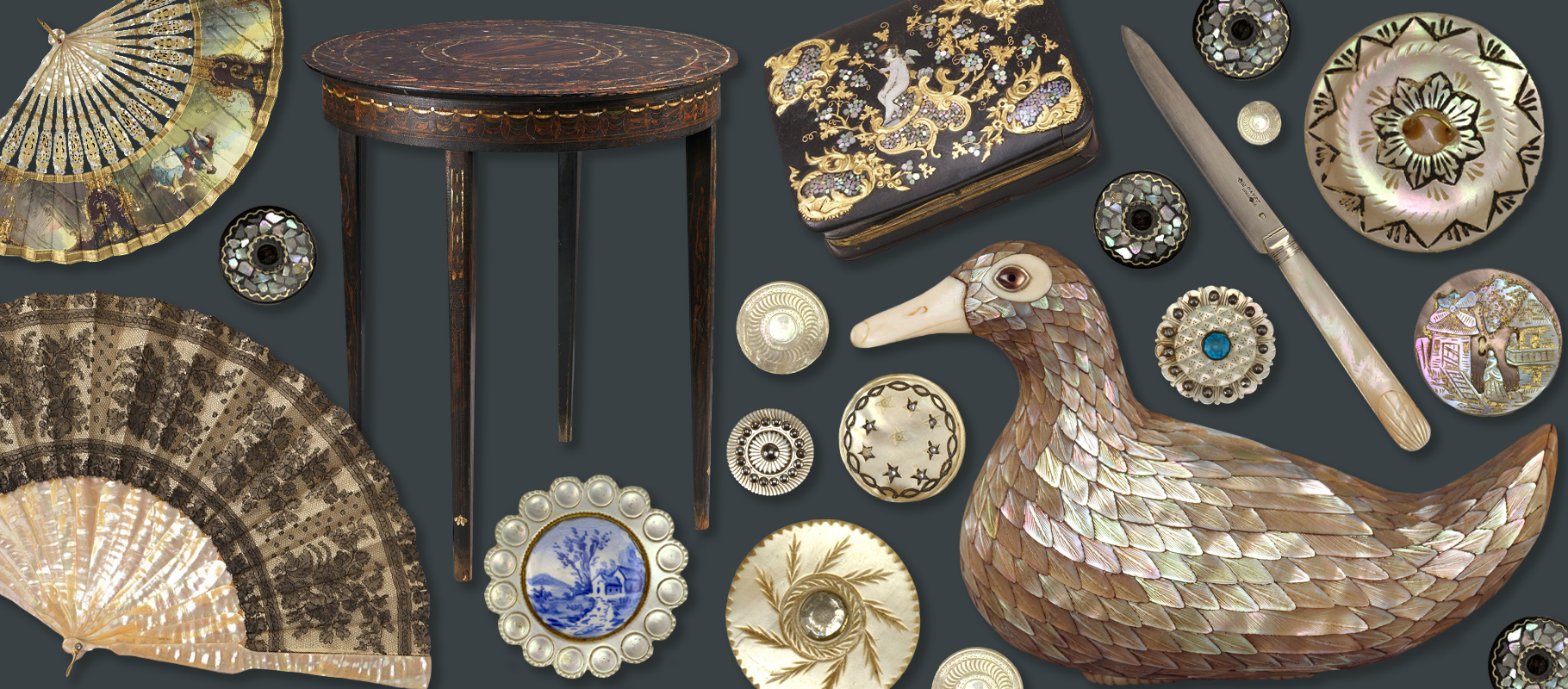 Above: a selection of mother of pearl antiques
Above: a selection of mother of pearl antiques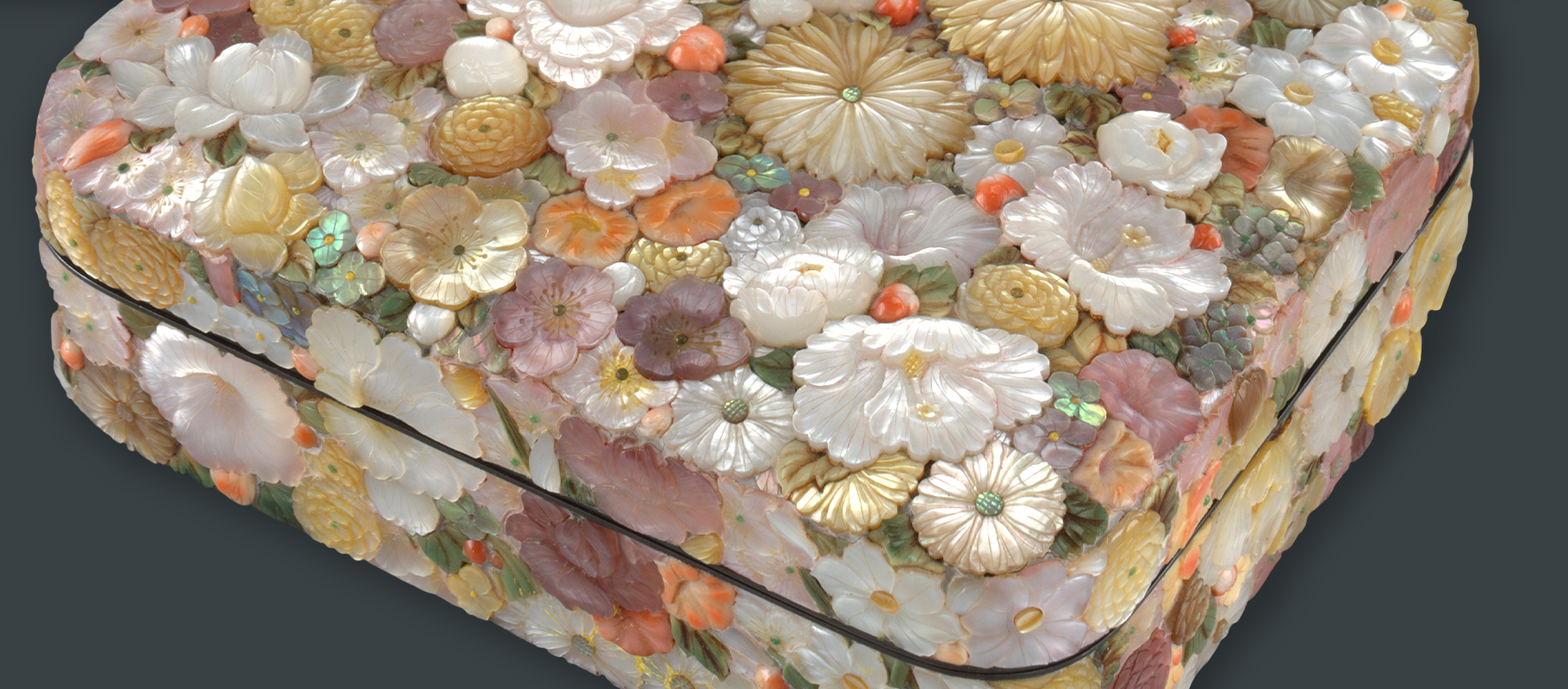 Above: a late 19th century Japanese box with mother of pearl and tinted ivory decoration
Above: a late 19th century Japanese box with mother of pearl and tinted ivory decoration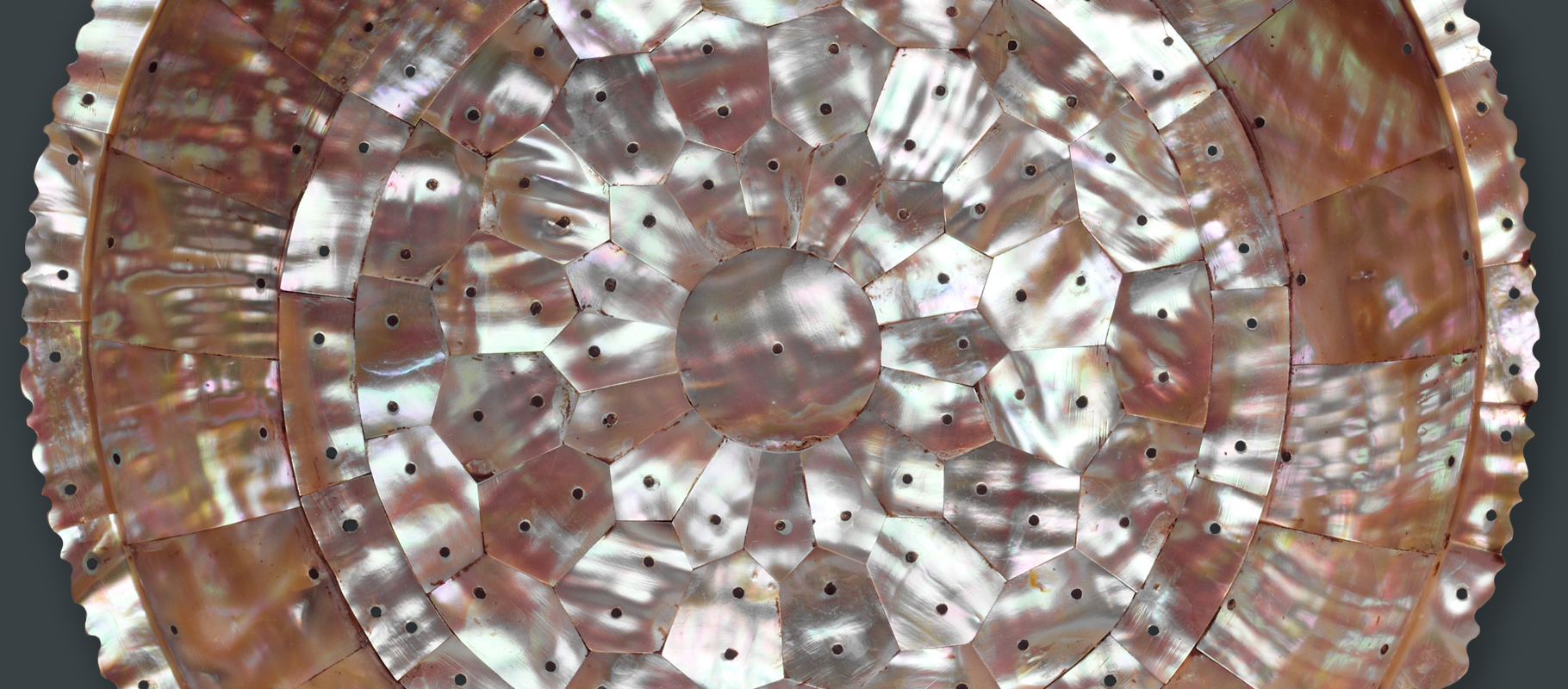 Above: a mid 16th / early 17th century mother of pearl plate from Gujarat, India
Above: a mid 16th / early 17th century mother of pearl plate from Gujarat, India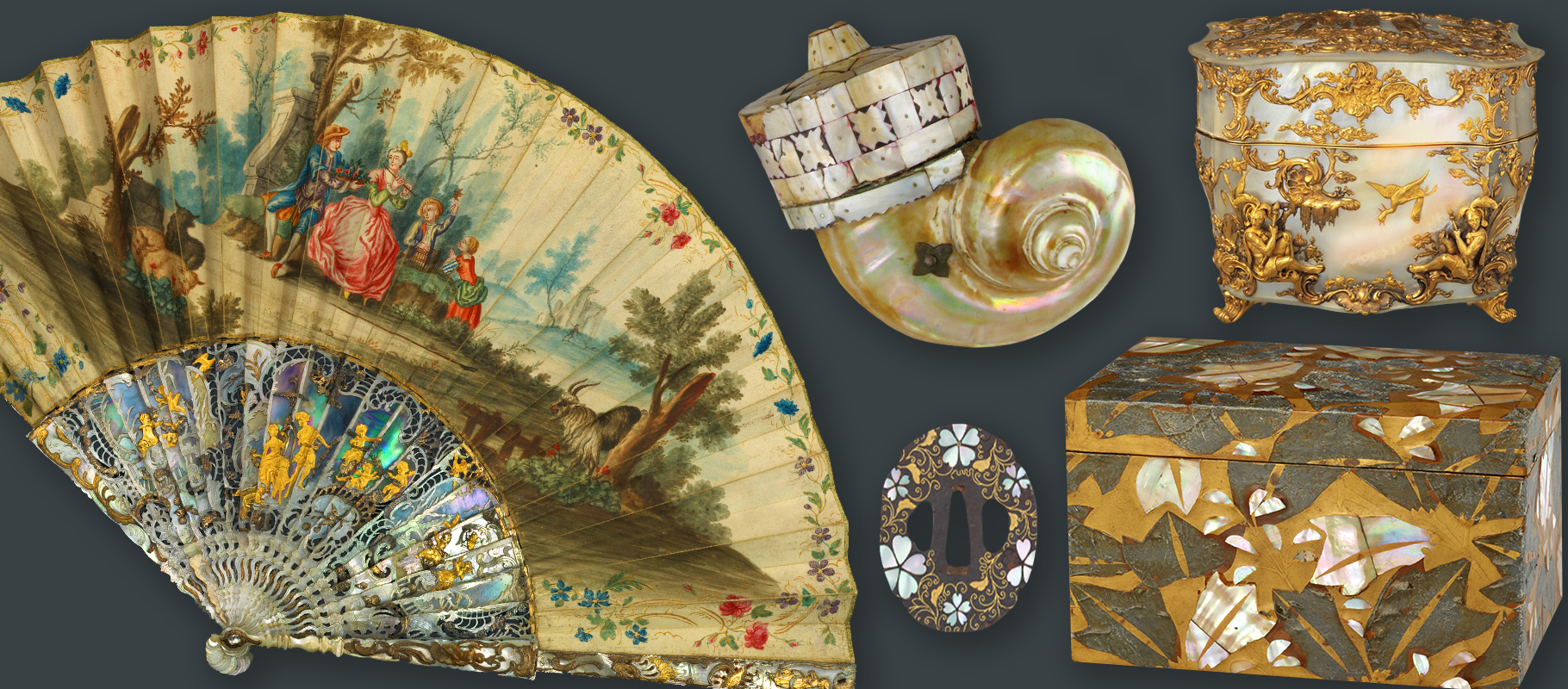 Above: a selection of mother of pearl antiques with an iridescent lustre
Above: a selection of mother of pearl antiques with an iridescent lustre 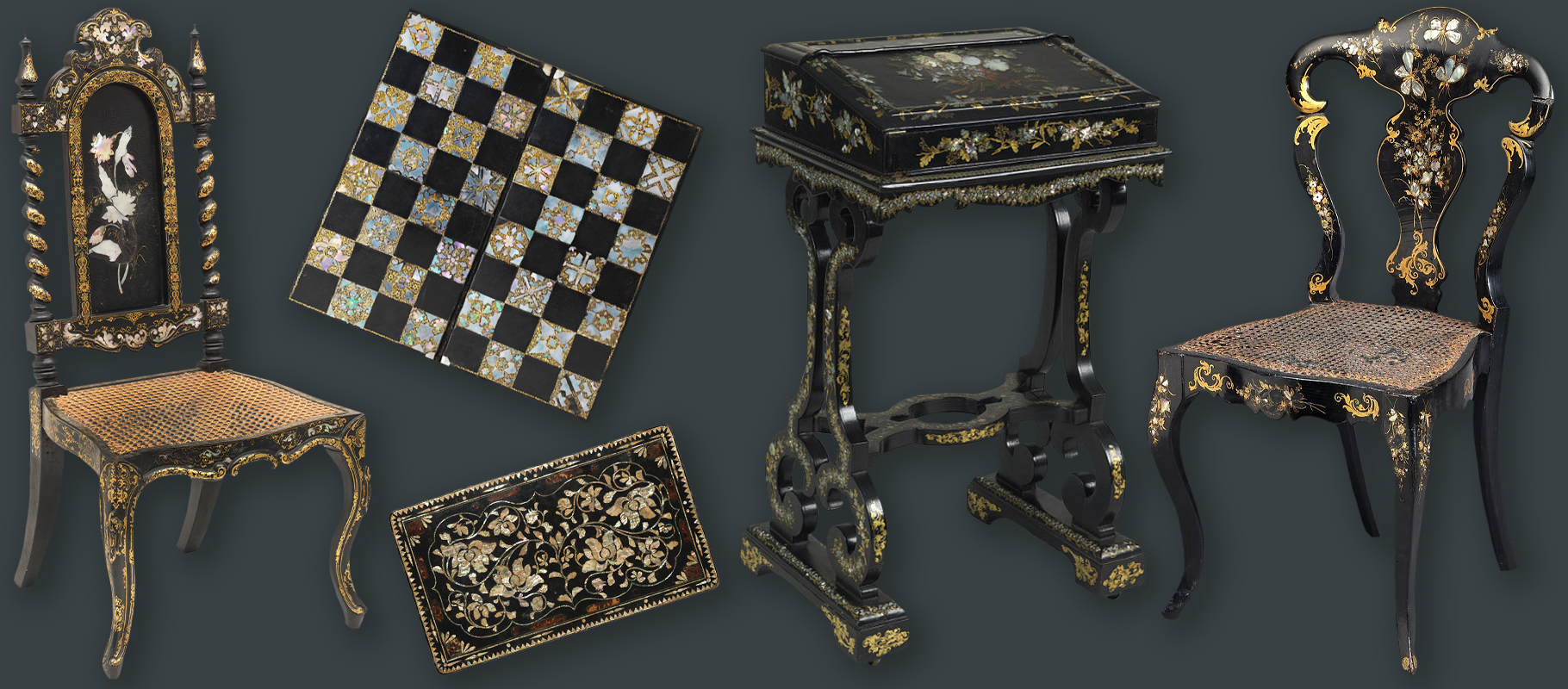 Above: furniture, a chess board and trinket box with mother of pearl inlay
Above: furniture, a chess board and trinket box with mother of pearl inlay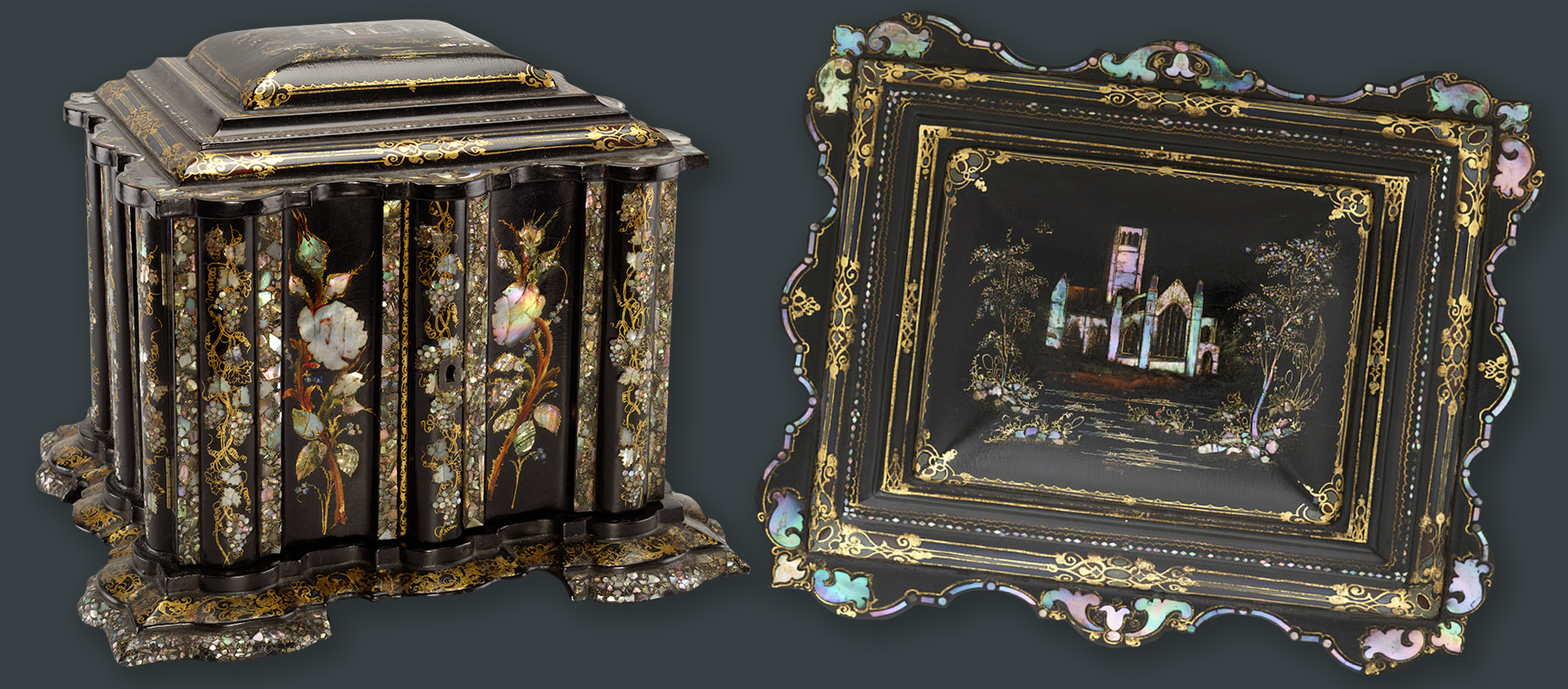 Above: a sewing box with mother of pearl inlay, 1850
Above: a sewing box with mother of pearl inlay, 1850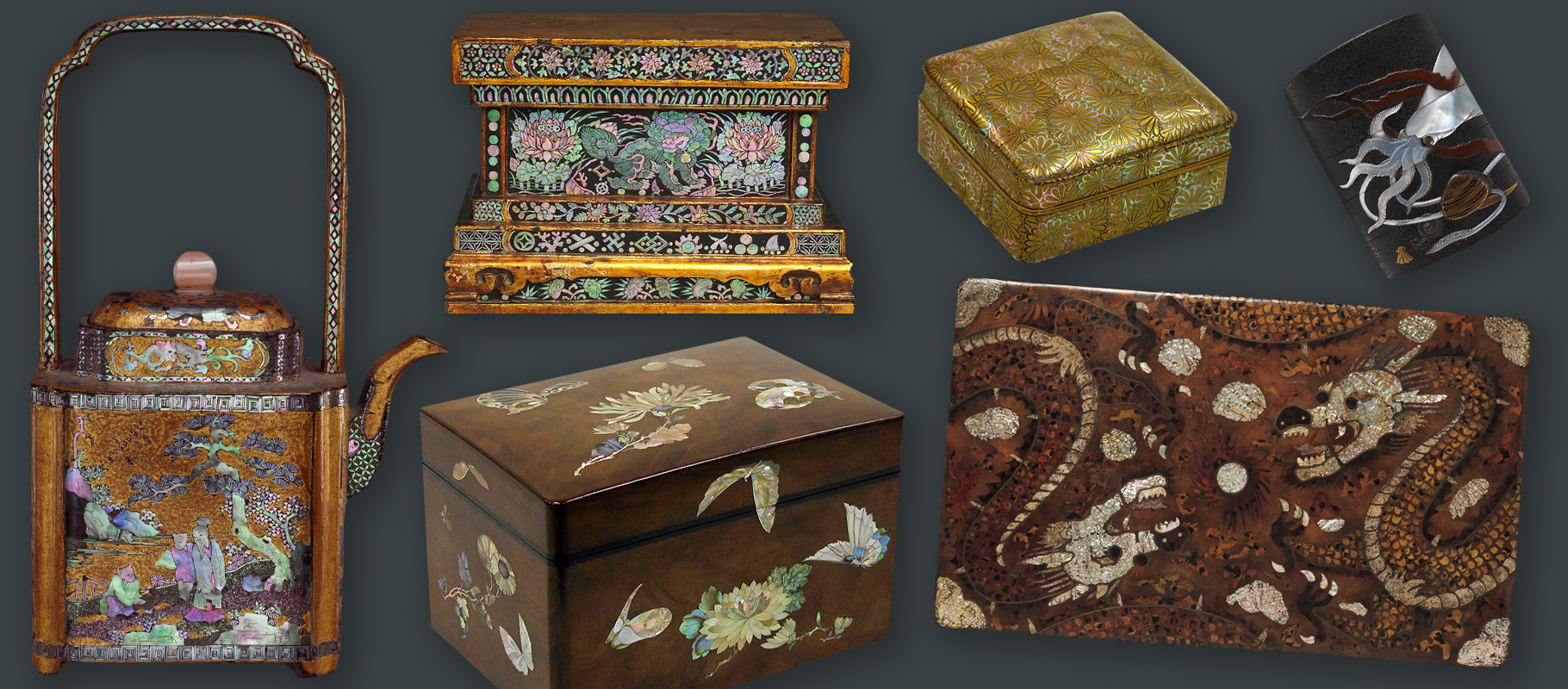 Above: a selection of Asian lacquer antiques with mother of pearl decoration
Above: a selection of Asian lacquer antiques with mother of pearl decoration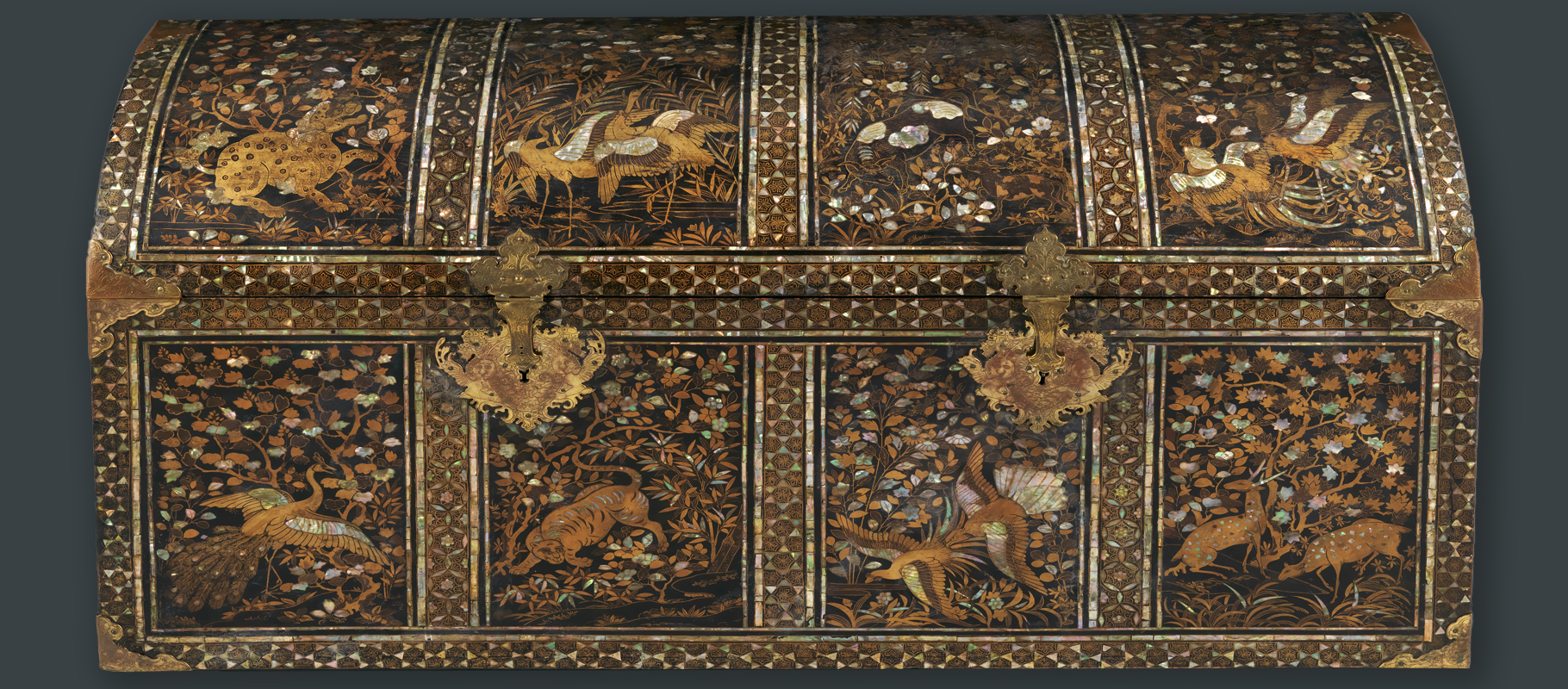 Above: a Japanese Nanban Coffer with mother of pearl inlay, early 17th century
Above: a Japanese Nanban Coffer with mother of pearl inlay, early 17th century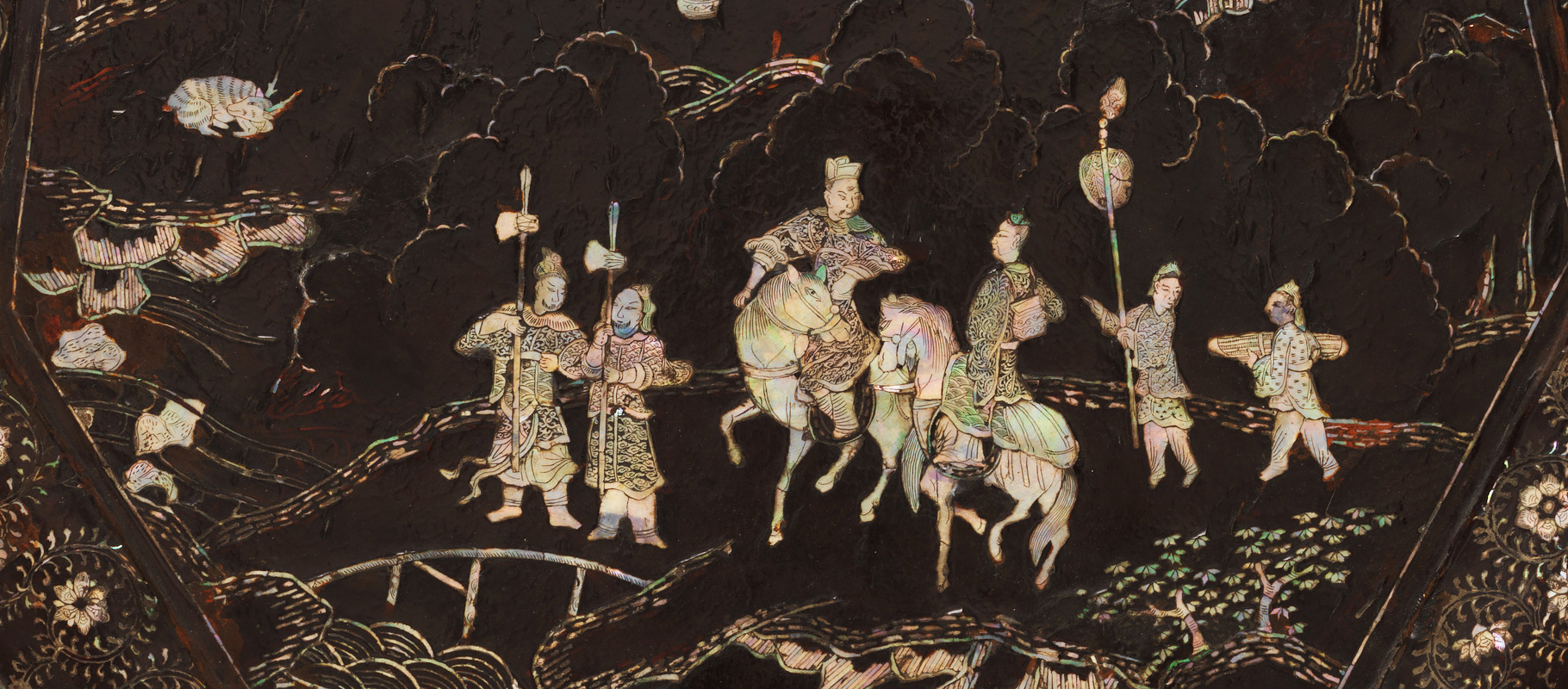 Above: a Chinese lacquer tray with mother of pearl decoration, 14th century
Above: a Chinese lacquer tray with mother of pearl decoration, 14th century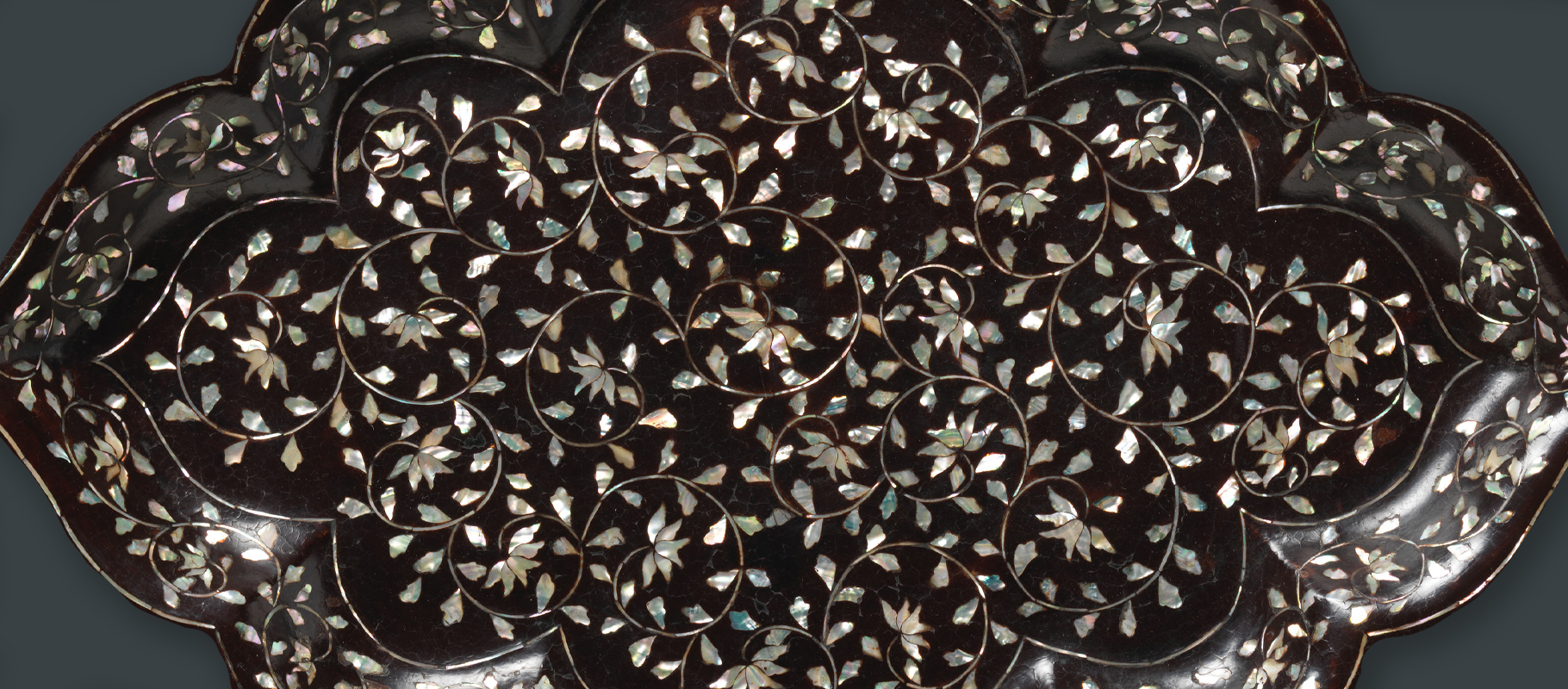 Above: detail of a Korean ogival tray with mother of pearl decoration, 15th-16th century
Above: detail of a Korean ogival tray with mother of pearl decoration, 15th-16th century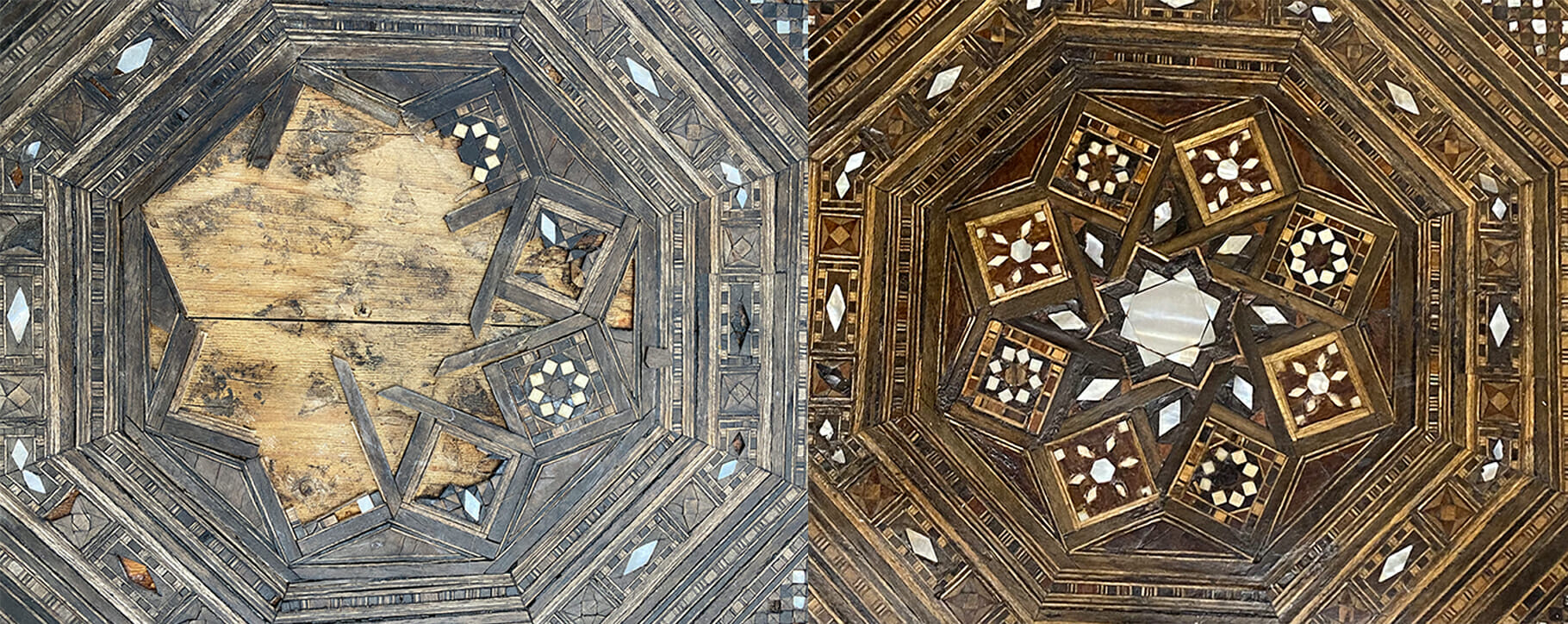 Above: a marquetry table before and after restoration
Above: a marquetry table before and after restoration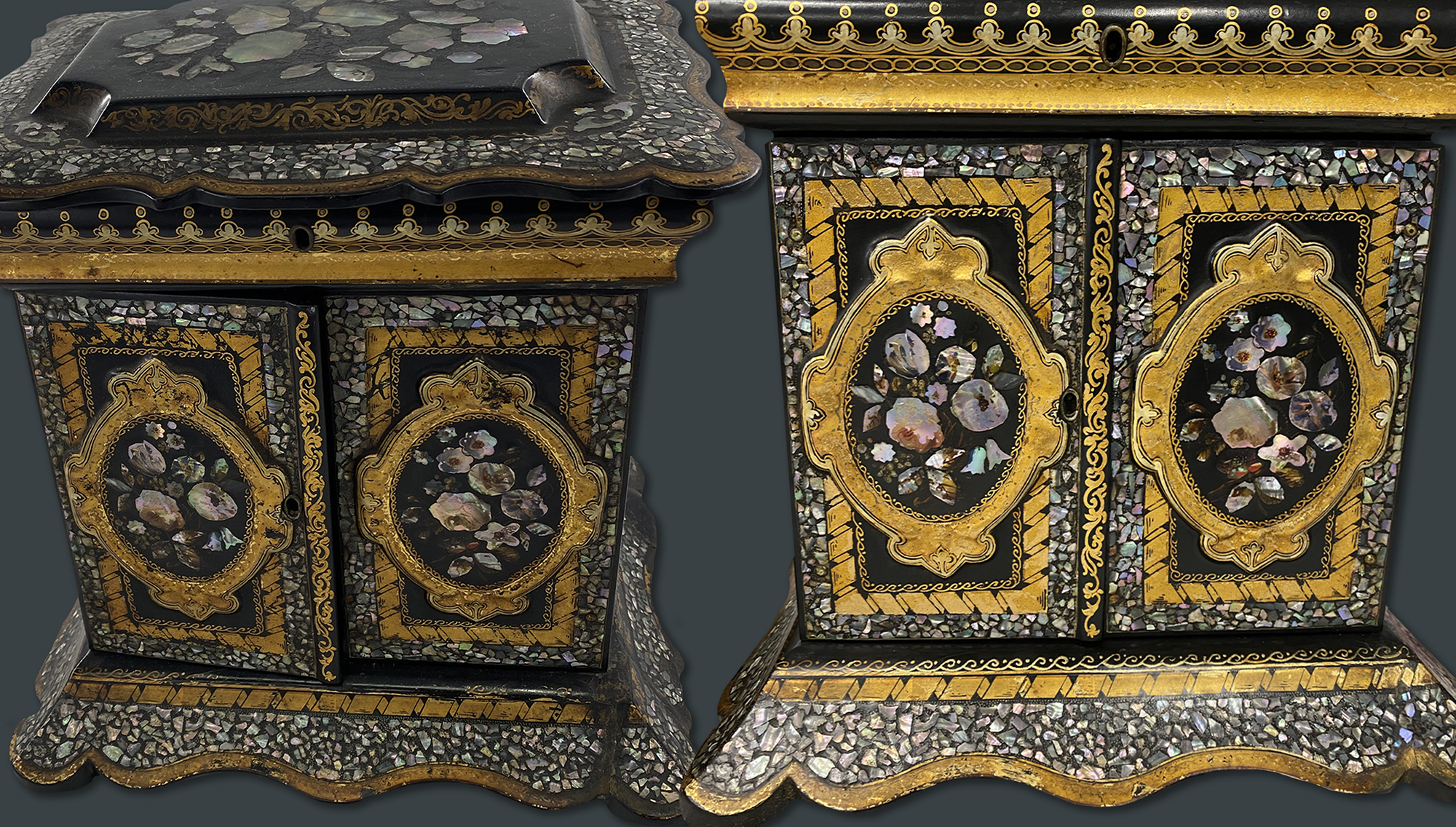 Above: a jewellery box before and after restoration
Above: a jewellery box before and after restoration 




